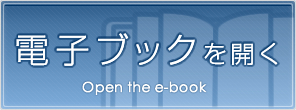「人道研究ジャーナル」Vol.2 page 73/276
このページは 「人道研究ジャーナル」Vol.2 の電子ブックに掲載されている73ページの概要です。
秒後に電子ブックの対象ページへ移動します。
「電子ブックを開く」をクリックすると今すぐ対象ページへ移動します。
概要:
「人道研究ジャーナル」Vol.2
The Journal of Humanitarian Studies Vol. 2, 2013The chief nurse, who wrote the above memoir, immediately set up an emergency aid station at an embankmentof the River Ota with surviving soldiers, and she cared for victims over there. In earlier years, she worked at ahospital in a battlefield in Hankou, Mainland China; thus, she had tragic experience of relief activities for theatomic bombing in Hiroshima as a battlefield mission again.The Hiroshima Army Hospital Mitaki Branch, which was in the north of Yokokawa Station and was locatedapproximately 2km (1.24mi.) from the hypocentre, was destroyed. Nurses belonging to Hiroshima Chapter ReliefParty No. 714, who worked there, also saw miserable atomic bomb victims while they were carrying militarypatients to an emergency shelter.Just after eight o’clock in the morning, I was in a briefing with a nurse on night duty at an office in the No. 57 Ward asusual, and suddenly, from the right rear a bright flash, sounds and a terribly strong wind hit me. Everything was blown up,including people. They screamed and caused panic. I did not know at all what was going on. We immediately started toevacuate patients under the instruction of an army surgeon. [...]I brought patients several times to the emergency shelter from the hospital. During each evacuation, I saw that peoplewalked to the north in a queue. Eyeballs of some victims dropped out their sockets, while whole skin of the legs of otherswas peeled off as one complete sheet of paper. How unspeakably cruel it was... [...] After a while, I realised that from myright shoulder to my back part of my green nurse uniform (dyed a white coat green as a protecting colour) was burnt andtorn. That part of my body was also bleeding; however, I did not have time to treat my injuries in order to carry out relief atthat moment. Two to three days later, I disinfected my wounded site. [...][...] During their round of activities, I saw many victims, who were in a critical condition, while wounded sites of othervictims were infested with an enormous number of maggots. I have seen enough of the misery of war. (The Hiroshima ArmyHospital Mitaki Branch: Memories of before and after the Atomic Bombing)The writers of‘The Mushroom Cloud: Memories of the Japanese Red Cross Nurses Attached to the Forces,’belonged to Party No. 106 of the JRCS Hyogo Chapter, also had been bombed at the Mitaki Branch Hospital. Shewas also acting as a clerk; owing to this, she recorded the day of the atomic bombing in‘Working Report’, whichwas submitted to the Headquarters, as follows.The nurse residential hall was thoroughly destroyed by fire due to the bombing in the morning of 6 August 1945. Thehospital was wholly destroyed. Some patients and three-quarters of the nurses were injured by fire and scattered glassfragments, which were caused by the atomic blast.Thirteen nurses were injured by scattered glass fragments, while three others were burnt. All survivors gradually recoveredby the end of the day and none of them were hospitalised.In an additional paper, she writes:The cause of the real horror of the atomic bombing cannot only be seen in the moment of the blast but we can also see thatmany victims continued to be plagued by suffering from disease. In fact, a wide range of symptoms appears in victims suchas high fever, purplish subcutaneous haemorrhage and bleeding gums and nose. As a result, they died. [...] The bomb isunspeakably cruel. Furthermore, we see many people, who are not injured at all, suddenly get sick and die. Therefore, manyof us feel cold shudders. (1 September 1945)人道研究ジャーナルVol. 2, 201371

